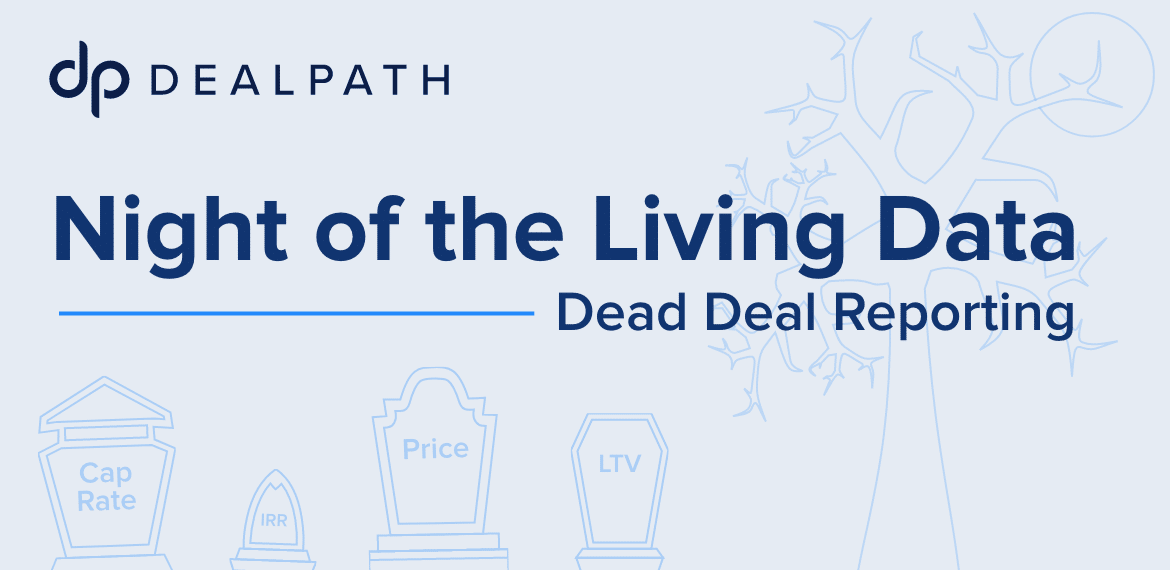There’s nothing spookier for CRE investment professionals than dusting the cobwebs off of an old spreadsheet or email to find dirty data, or that it simply disappeared into darkness.
Rapid, granular data insights are now table stakes in the highly competitive CRE industry. Beyond real-time analytics and reporting, however, one largely untapped channel to fuel competitive intelligence is dead deal analysis.
In this blog post, we’ll outline why your firm must review dead deal reports, including 5 otherworldly insights to analyze performance and reanimate your strategy.
What Is a Dead Deal Analysis Report?
As your firm audits pipeline performance to uncover which sectors saw supernatural success and where skeletons are hiding in the closet, every data point matters. Centralizing deal information in a deal management platform like Dealpath creates the opportunity to uncover unique, real-time insights.
In partnering with hundreds of CRE firms across nearly every sector and vertical, we’ve empowered industry leaders to better inform their strategies with dead deal analysis reporting. Dead deal reports break down outcomes based on factors like target market, pricing misalignment, stage when marked dead, and more. In the next generation of AI-powered CRE investment, intelligence like this is foundational to your competitive advantage.
Armed with these learnings, your firm can bewitch its strategy by straying away from low-performing verticals, doubling down on high-performing markets, or fixing bottlenecks. While dead deal reports can be configured to meet your unique needs, these are some of the most popular insights to learn from dead deal analysis.
5 Haunting Insights to Learn From Dead Deal Analysis Reports
1. There Are Patterns in Deal Breakers
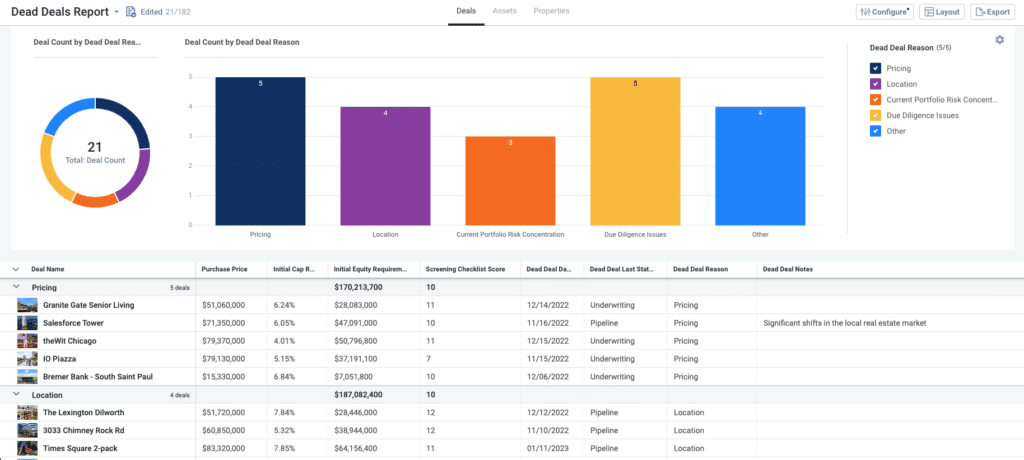
From inadequate foot traffic to financials that don’t pencil, numerous factors can send a deal to the graveyard. Dead deal reports offer a unique opportunity to learn from common themes in the reasons that deals died.
Were there consistent issues around pricing, the condition of the property, financing, or counterparties? Understanding patterns can help you refine these criteria to improve future deal sourcing. For example, uncovering that deals sourced from a particular broker frequently die might indicate the need to strengthen relationships with other brokers that source more lucrative deals.
2. You Need a More Rigorous Deal Evaluation Process
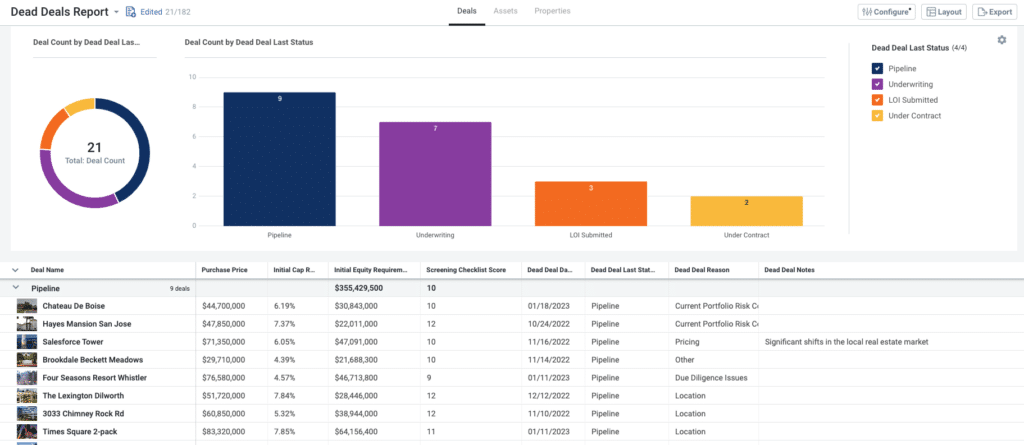
The majority of your deals are bound to die as they progress through the funnel. When a high percentage of deals die in a certain stage, though, don’t scream bloody murder.
Dead deal analysis reports can also help your firm to assess where additional rigor might be needed throughout the evaluation process. If a significant number of deals die due to surprises that surface in diligence, for example, then it might indicate a need to surface financial risk earlier on by adding rigor during screening. Tracking when deals die (and if there’s a shared reason) can highlight where–and why–your evaluation process needs strengthening.
3. Market Conditions Are Changing
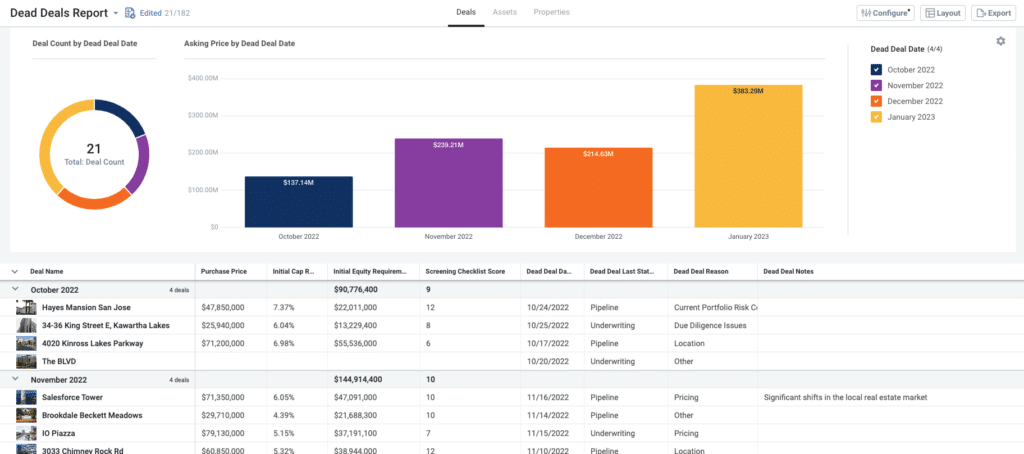
Don’t scream like a banshee when your late-stage pipeline starts to feel like a ghost town.
Dead deal analysis reports also provide a unique lens into broader market trends, such as valuations, cap rates, and other metrics. Material changes in deal flow patterns can be a telling signal of evolving market conditions.
If your firm is closing fewer deals than in recent history, look to other sources of truth to better understand recent trends. For example, try validating this analysis by viewing cap rates over time in the same submarket across a cohort of deals in Dealpath.
4. Past Deals May Be Ready for a Follow-Up
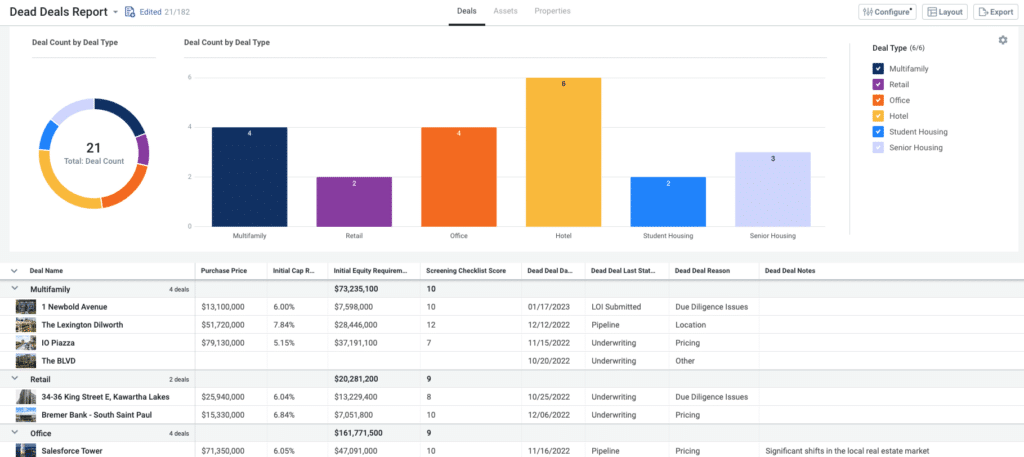
Is it time to raise a particular deal from the dead?
Auditing dead deal reports can surface opportunities to revive a deal as conditions change. For example, if the office sector improves performance in suburban markets,a dead deal might be worth reconsidering. Dead deals in Dealpath carry the unique benefit of a historical record, meaning your team can kickstart outreach and re-evaluation with a wealth of existing information.
After all, your next lucrative deal could be one buried deep in the graveyard.
5. Close Rates in Particular Submarkets
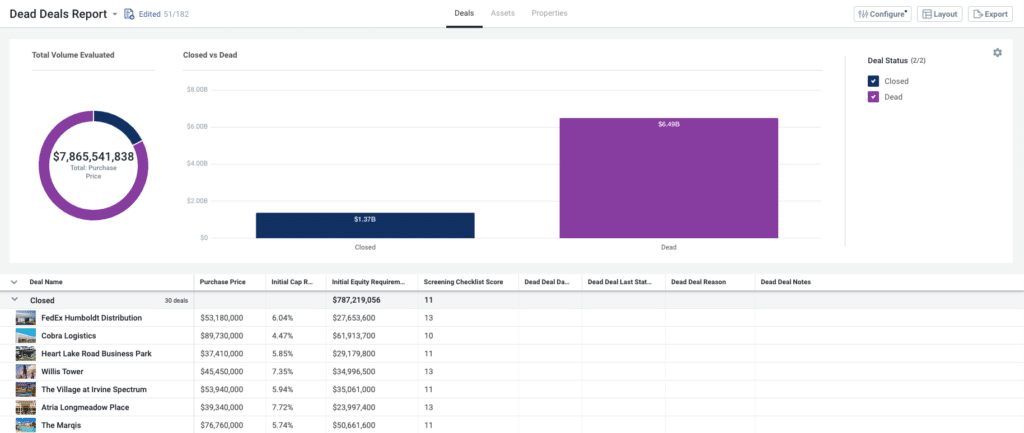
You don’t need a ouija board to learn how your firm can close more deals. Instead, simply monitor your close rate in key target markets on a dead deal report.
Tracking your pipeline in a centralized, cloud-based system creates a record of every deal you review, including the percentage that ultimately close. A high close rate might indicate that it makes sense to source more deals in that particular submarket. Conversely, a low close rate might trigger a shift in strategy or resource allocation.
Benchmarking close rate for each stage of your pipeline can reveal where deals are stalling out. After discovering initial benchmarks, set a target close rate, diligently track it, and evaluate steps to align conversion rates to your targets through each stage.
An objective close rate is vital for keeping your deal sourcing and evaluation process sharply focused.
17 CRE Investment Questions Your Data Can (Finally) Answer
To outperform the competition and move at digital speed, real estate investment managers must make decisions that are grounded in–not simply supported by–data.
Download our white paper to learn just a few examples of how CRE investment managers can turn data into answers with unprecedented speed, precision and scale with deal management software.
Download Now
